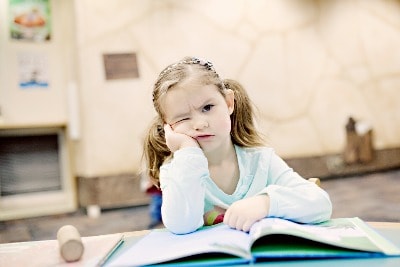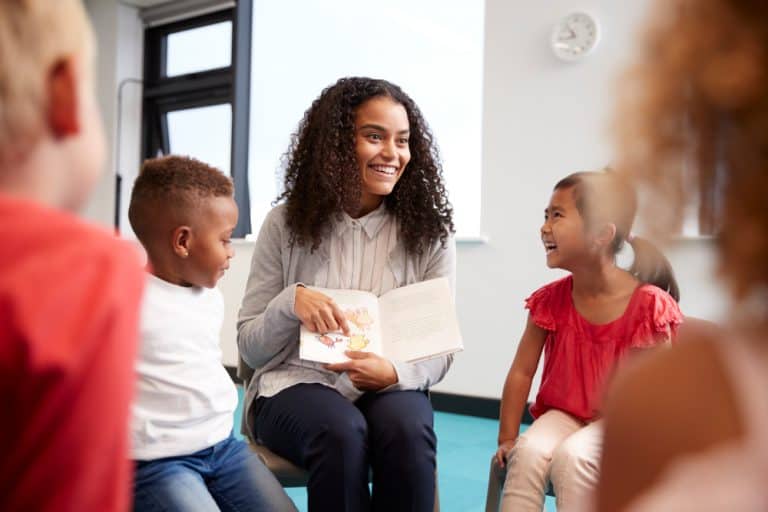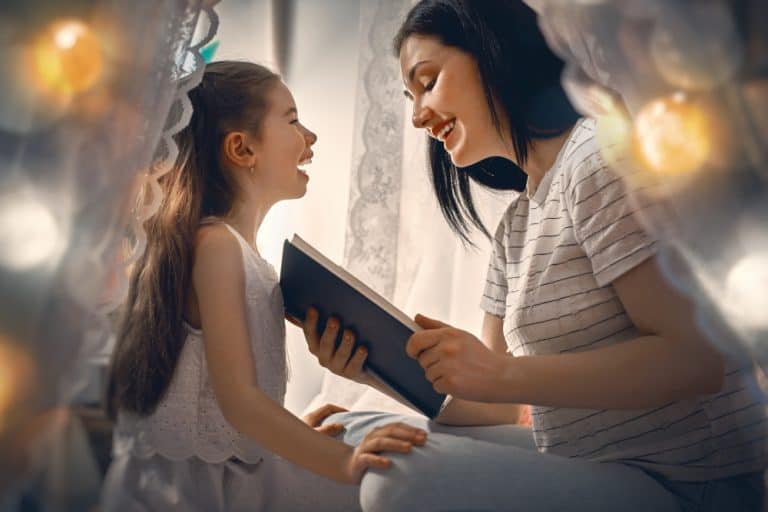Picture book writing
In picture book writing, keep this in mind:
- Which age group your children’s book is for (target audience).
- The style of writing, for instance, rhyming.
- Does your book have morals or something to teach children?
- The writing itself: Bear in mind the word count and the word choices for early readers.
- The length (page count) of your children’s picture book.
- Types of illustration suited for the age group and book style.
- How many illustrations of which size you’ll have in your book and if they’ll be full colour
- The best children’s book illustration examples as inspiration.
You’re here because you want to know how to write a picture book.
In this article, I’ll cover all the above points in more detail, give some examples of the most successful children’s picture books of all time, and go over the various styles you can use. Whether you’re looking for a traditional publisher or self-publishing, and whether you’re writing your picture book for fun or to be educational, this article will be helpful to publish a well-written picture book.
Once you have all these basics in place, you’ll have a good idea of how to write a picture book that captures the imaginations of children.
Which age group your children’s book is for (target audience)
Having a target audience isn’t a nice-to-have, it’s essential. In kids’ books, this includes targeting a specific age group.
Whether you’re self-publishing or traditionally publishing, you can’t write a book for one- to nine-year-olds. That’s the same as saying, of an adult book, “Fans of horror, historic fantasy, sci-fi and cosy mysteries will love this book.” Erm, wait… That might be an over-the-top example, but it makes my point.
So, the first step of how to write a picture book is to choose an age group and study books written for that age group. Then you can make your writing and illustrations perfect for children of that age.
Not all kids love the same things. You may write for kids who love space travel, or ballet, etc.
Still, a ballet book for a two-year-old and one for a ten-year-old will be different.
Two target audiences
Another key step in picture book writing is understanding your target audience. Children’s books are unique in that they need to appeal to two audiences: the children the book is for, and the grown-ups that purchase and read the books with the children.
Ways to know your audience is to:
- spend time with children in your target age group
- talk to parents and teachers of kids that age
- if you’re aiming at older children, you can speak to them directly
Whether you’re speaking to kids or adults, ask them questions about what they/their kids like and don’t like. (Younger kids will require more observation than conversation.)
Kinds of questions you can ask:
- Which kinds of books do they read?
- What do they think makes an excellent book?
- Are there any books they like to read again and again? Why?
- Which kinds of books don’t keep their attention?
- What are their favourite movies, tv shows, toys, pastimes, etc?
- What makes them giggle?
Also spend time in libraries and bookstores to read well-written books. Find out which picture books are doing well. You can ask the librarian which books in your age group are popular. Or ask the shop owner for their bestselling books. While there are many well-written self-published picture books, it’s safer to study traditionally published books, as they are always professionally edited and illustrated, so they’re more likely to always be good examples of how to write a picture book.
See what other picture book authors are writing about and read their books to get ideas and inspiration. See how they are illustrated and how long the manuscript (text) is for each. The picture book industry is highly competitive, and this is a crucial step to help you get a feel for how to write a picture book that will sell.
This article breaks down the age groups.
The style of writing
In learning how to write a picture book, there are various ways to tell your story. You can be funny, gentle, educational, or use any other style of writing for your manuscript. There is no right or wrong way, but once you pick your style, stick with it.
Don’t force a book into rhyme or a moral. There are many opinions out there about whether you should write in rhyme, or whether to include a moral.
The evidence is conclusive that the answer is neither, “Always do it”, nor “Never do it”.
Some bestsellers are written in rhyme. Some aren’t. Some contain a moral or life lesson, and some don’t.
Write how and what you want to write.
Yet, keep in mind these qualifiers for rhyming and morals:
Rhyming:
If it’s rhyme, make sure it’s done expertly and that the story takes precedence over the rhyme. Rhyme isn’t as simple as some authors believe, and if it’s not written well, it can hinder the story. Read articles or do a course and learn what makes rhyme work, and practice to do it like a pro. (I highly recommended a brilliant editor if you want to write in rhyme.)
Morals
The second qualifier is, “Don’t preach.” Kids get told what to do daily. You can be educational and convey any message without being preachy. This is one of the most common mistakes I see authors making in how to write a picture book.
Don’t address kids like dumb little adults, either. Never hit them over the head with your message. Respect them in your writing. Children can figure out a lot for themselves if we give them the opportunity. They are more likely to get the point if you make the story entertaining and capture their imaginations, rather than being didactic.
If your book has a moral or something to teach children, go ahead! Books are a wonderful way of encouraging children and helping them learn about life, friendship, values, and so on, but do it in a manner that allows them to draw their own conclusions.
E.g. if Johnny eats too many chocolates and gets sick, that already shows the consequence of eating too much candy. Don’t add, “See kids, don’t eat so many chocolates. It’s bad for you. It will make you sick. So don’t do it.”
You don’t even need to add, “Johnny realized too much candy can make him sick, so…”
All that’s needed is to see Johnny’s development. For instance, Johnny saying “no thanks” next time, or eating a lot less candy at a party, or deciding to have an apple instead.
Or if your picture book is about the importance of friendship, don’t say, “See, friendship is really important”. Simply show your characters making up after an argument and how happy they are to be friends again. Kids learn by seeing the development of relatable characters. They don’t need to be told the message.
The message can be conveyed better without preaching.
Other factors related to writing style:
Past or present tense
You can write in past or present tense, but be sure to stick to one of them. Don’t jump between tenses.
Good: Mary had a little lamb. His fleece was white as snow.
Not good: Mary had a little lamb. His fleece is white as snow.
It may seem obvious, but you’d be surprised how common this error is.
Point of view
You can write in first or third person, or third person omniscient point of view. Some books are even written in second person.
- First person: I/we
- Third person: he/she/it/they
- Second person: you
Again, stick to one point of view and don’t go back and forth.
It’s easier to make the mistake of using an inconsistent point of view in chapter books, starting a new chapter differently than the previous one. So pick one and stick with it.
First person examples:
The wall in the middle of the book by Jon Agee
Another first person example is one of my favourites—After the Fall by Caldecott medal winner Dan Santat.
Third person example:
A Piglet Named Mercy by Kate DiCamillo is a great example.
Second person example:
Second person (“you”) perspective is quite unusual, but can make a fun angle where the protagonist “speaks” to the audience.
The Don’t Let the Pigeon series by Mo Willems is a fun example of this, where the character talks to the child and gets them to interact with the book.
Here is a page from the book Don’t Let The Pigeon Drive The Bus:
Don’t push the button by Bill Cotter is another wonderful example of a second person book.
Human, animal, or fantasy characters (or a mix)
Children’s books have three kinds of characters: human, animal, or fantasy characters.
A human protagonist will mostly be a child that is slightly older than the target audience, but can also be an adult that kids can relate to.
Animal or fantasy characters follow the same rule. Even if the character is a unicorn or a bear, it is still usually a “child” that’s a bit older than the audience.
The writing: bear in mind the word count and the word choices for early readers
Traditional publishers have guidelines they follow regarding word count. If you want to write a children’s book and get it published, especially in picture book writing, you need to stick strictly to the right word count. If you submit a manuscript with too many words, that could be grounds for rejection. Even if you’re self-publishing, also follow these guidelines, as this is what readers have come to expect.
Word count can make or break an adult’s willingness to read the book, especially repeatedly. If you’ve read to kids or your grandchildren, I’m sure you’ve had that moment of, “When is this book going to end?” Too many words are your enemy.
Picture books for 2- to 5-year-olds should have a word count of under 500 words. For 5-8-year-olds you can go up to 800 words. You can read more on word count in this article (scroll down about halfway to the table).
Keep sentences short and simple to suit the age group and while you can use bigger words to build vocabulary, use them sparingly. I explain why in this article, under the heading “Using Big Words”.
Length of your children’s picture book (page count)
One of the common confusions I encounter is how many pages a children’s picture book should be.
It is important to have a page count suitable to your age group. Readers get used to industry standards and if your book is different, it may alienate them.
32 pages is the most common length for picture books. You can see common word and page counts under Step 3 of this article.
Figure out how maybe pages you want your book to be and what is suitable for the age group. Once your manuscript is complete, you can make sure it fits into that page count.
Types of illustrations suited for the age group and book style
You can illustrate yourself or outsource. But, remember, “A picture book is a marriage of words and pictures. The most successful illustrations are the ones that take a story to another level. They don’t just illustrate the words. They add something else to them.” -Jill Santopolo, NY Times bestselling author
If you aren’t excellent at drawing, or don’t feel confident you can tell a story with your art, get a pro to illustrate. Think back to your favorite childhood books: which do you remember more vividly, the prose or the pictures?
Younger children prefer illustrations with bright colours, literal interpretations (not too abstract or figurative) and not too complex or busy.
Older children can appreciate a wider variety of styles, colour palettes and interpretations of the text.
Your style needs to match the book’s tone. A funny book needs humorous illustrations, not gentle watercolours. And a gentle book won’t work with goofy art.
How many illustrations of which size will you have in your book, and will they be full colour?
A picture book is usually made up of spread illustrations. Sometimes full-page illustrations are thrown into the mix. Each page is fully illustrated.
The standard 32-page picture book typically contains 14 full colour spread illustrations. This is because 28 pages are used for the story (14 spreads = 28 pages), while the other four pages are for front and back matter.
A quick guide:
- Picture books and early readers are fully illustrated (in colour) on each page.
- Early chapter books usually have an illustration for each two to four pages, often in black and white.
- Middle grade books can have one to a few illustrations per chapter, also often in black and white. Sometimes they have no illustrations.
Best children’s book illustration examples
Here are a few examples for inspiration!
A fantastic illustration can take you on a journey all by itself:
Illustration by Emily Hughes for her book, Wild
Animal characters can make for wonderful picture book illustrations:
Illustration by GetYourBookIllustrations for Turtley in Love by Victoria Bailey
Children enjoy bold, colourful illustrations:
Illustration by Marc Martin for Every Child a Song by Nicola Davie
Illustrations can inspire:
Illustration by Diana Sudyka for by Hayley Barret
Illustrations are a great way to add humour to your book:
Illustration by GetYourBookIllustrations for Gurgle Gurgle Splat! by Coni Knepper
Simple illustrations can be the most powerful:
Illustration by author-illustrator Cale Atkinson for To the Sea
Great illustrations really help to bring your characters to life:
Illustration by Shane Crampton for Stay Wild My Child by Mandy Archer
Feel more knowledgeable about how to write a children’s picture book?
I hope this article made you feel more empowered to write and create a great picture book!
Is there anything in particular about this subject you’d like to know more about? Then please let me know in the comments below so I can address your questions.
To refer back to Santopolo’s quote: “A picture book is a marriage of words and pictures. The most successful illustrations are the ones that take a story to another level. They don’t just illustrate the words. They add something else to them.”
At GetYourBookIllustrations it’s our greatest passion to bring that quote to life, and that is what we do all day, every day. Every story we illustrate is special to us, and we work to take it to another level with our illustrations.
We’re happy to answer all your illustration-related questions (no obligation whatsoever) on a free consultation call! Click here to book.
I’d love to read your comments!
- I love to discover new books. What are some of your favourite examples of children’s books written in first or second person?
- Which book(s) have memorable illustrations that have stayed with you long after seeing them?
FREE Webinar: How To Write A Picture Book Without Self-Doubt Or Procrastination, Even If You’ve Always Struggled To Turn Your Idea Into A Story.





















i like read article here, where did you learn to blog from